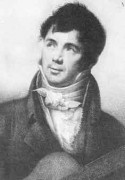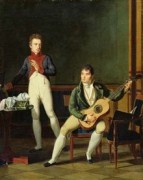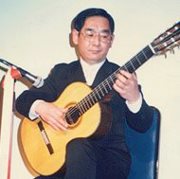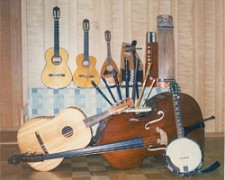ギター変奏曲の魔笛について
ギター変奏曲の魔笛について
関連記事
フェルナンド・ソル(スペイン語:Fernando Sor, カタルーニャ語:Ferran Sor i Muntadesファラン・ソル・イ・ムンタデース, 1778年2月13日?(洗礼日は2月14日) – 1839年7月10日)は、スペイン・バルセロナ生まれの作曲家・ギター奏者。スペインでは「ギターのベートーヴェン」とも呼ばれる。ソルは、ギターの音楽レベルを可能な限り高め、ギターを世に広める努力をしたギターの第1期黄金期に活躍した一人である。また、過去200年において、コンサート楽器としてのギターのための曲を最も書いた作曲家の一人である。作風 / ソルの作風は古典派の様式を忠実に受け継ぐものであるが、後年の批評家にはロマン派と見なされる場合が多い。彼は序奏部に短調を好んで用いたが、代表作『モーツァルトの「魔笛」の主題による変奏曲 Variaciones sobre un tema de Mozart』でも、ホ短調による序奏から、ホ長調の主題へと転調していく構成が採られ、『グラン・ソロ Gran solo』においても、ニ短調の序奏に始まり、それからニ長調の主題へと移っていく。他の特徴としては、不協和音を大胆に取り入れ、それが作品に独特の効果を与えている点である(ただし、ここでいう「不協和音」とはモーツァルトなど特に古典派の作曲家が好んで使用した低音の保続音を用いてのことなので、古典派としては常例である)。彼の作風には、もちろんハイドンやモーツァルトの大きな影響を伺うことが出来るが、他の同時代の作曲家とは異なったスタイルの作曲家として、言及される必要があるだろう。作品 / ギター奏曲 / 『モーツァルトの「魔笛」の主題による変奏曲』 Variaciones sobre un tema de Mozart Op. 9 (フェルナンド・ソル – Wikipedia)
Introduction and Variations on a Theme by Mozart, Op. 9, is one of Fernando Sor’s most famous works for guitar.[1][2][3][4][5] It was first published in London in 1821 and dedicated to Sor’s brother Carlos. Editions / The title page of the first edition reads “As performed by the author, at the Nobilities’ Concerts.” The French edition was published by Meissonnier, dated roughly in the same period, and had one less variation, no coda, and some differing notes. It is thought that this version could have been a simplification of the original work. However, in 1826 or 27, Meissonnier brought out another version, this one identical to the London first edition. The piece / This piece embodies Fernando Sor’s best characteristics as a composer, requiring great technique. It is a relatively frequently performed piece that serves as a “testing ground for every aspiring guitarist.” As said of this piece and Op.7, the Folies d’Espagne, by Brian Jeffrey, author of the largest Sor biography to date, “no space is wasted and the music devotes itself not to “guitaristic” effects but only to itself.” The work is based on a melody from Mozart’s opera The Magic Flute. The opera was first performed in Vienna, 1791, and in German, while the first performances in Italian took place in 1794, so Sor could have feasibly written the piece any time since then. However, it is more likely that he was inspired to write the piece when the first major production was premiered in England in May 1819, when Sor was in the area. The theme and the variations are based on this one that was used in numerous composer’s arrangements, some being by the flutist Drouet, by Herz, and by Mikhail Glinka. It is the theme played near the end of Act I called “Das klinget so herrlich”, in Italian either translating to “O dolce concento”, “O dolce armonia”, or, as Sor chose to use, “O cara armonia”. This last translation was also used in the vocal score of The Magic Flute published in Birchall, London in around 1813. (Introduction and Variations on a Theme by Mozart (Sor) – Wikipedia)
音楽動画
『モーツァルトの「魔笛」の主題による変奏曲』 Variaciones sobre un tema de Mozart Op. 9 (アンドレス・セゴビア)
関連エントリ
ツイッター( Twitter)
フェイスブック (Facebook)
- 一つ新しい記事: シェヘラザード (リムスキー=コルサコフ)について
- 一つ古い記事: モーツァルトの魔笛について
コメントをどうぞ
- お名前とメールアドレスは必ず入力してください。
(メールアドレスは管理者にのみ通知され、コメント一覧には表示されません) - いただいたコメントは管理者の承認が必要となる場合がありますのでご了承ください。
















コメント
コメントはまだありません。